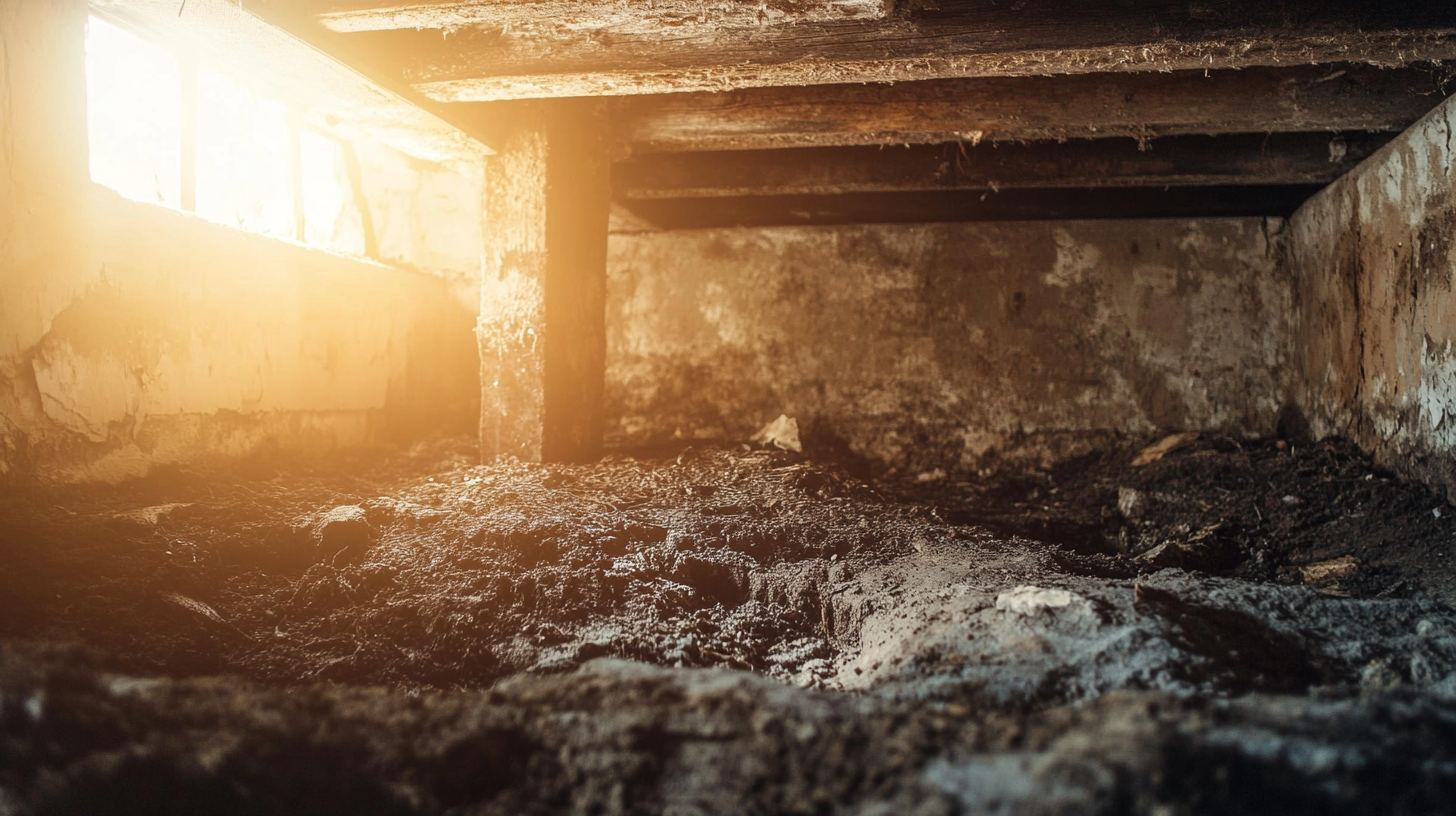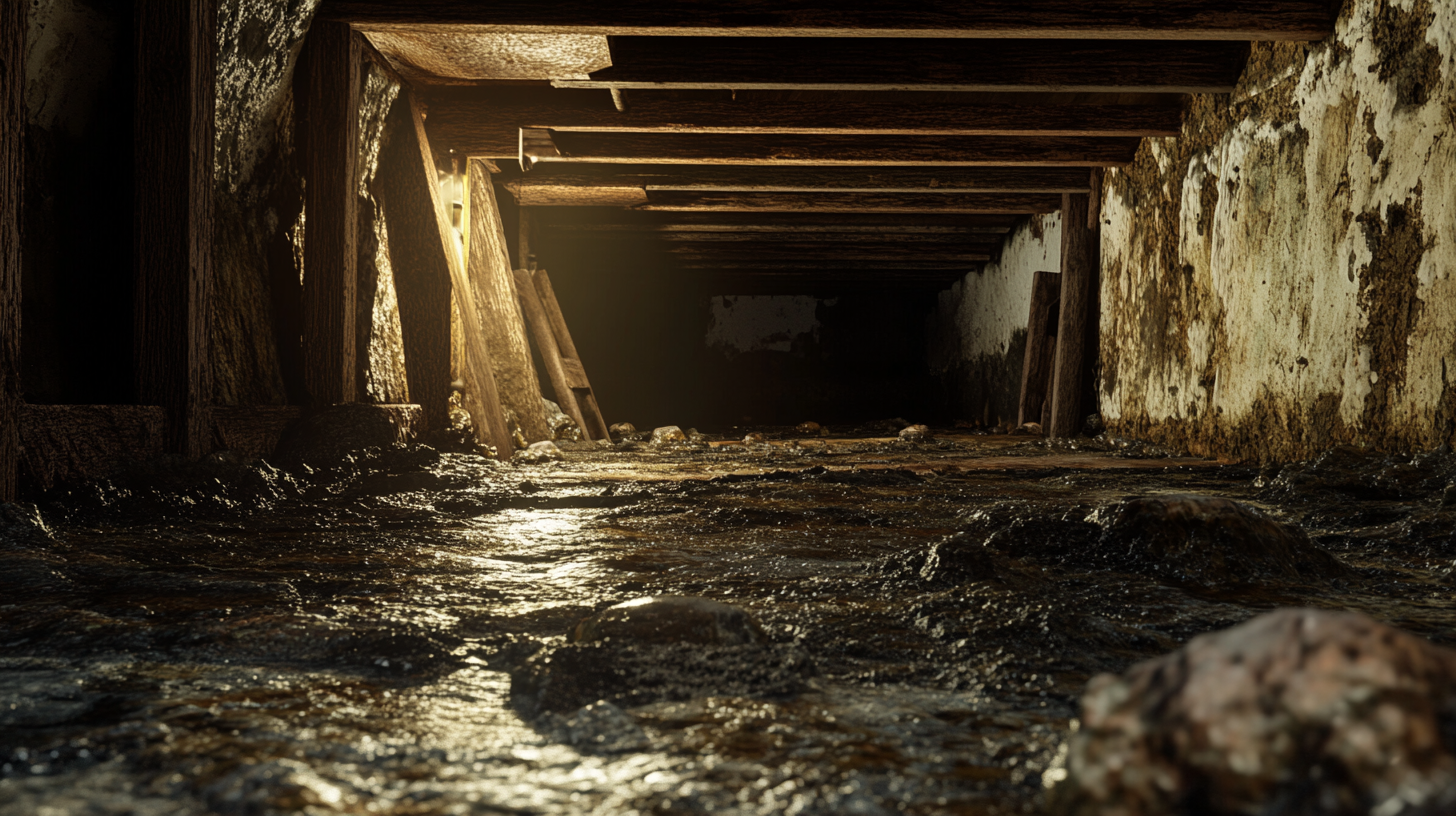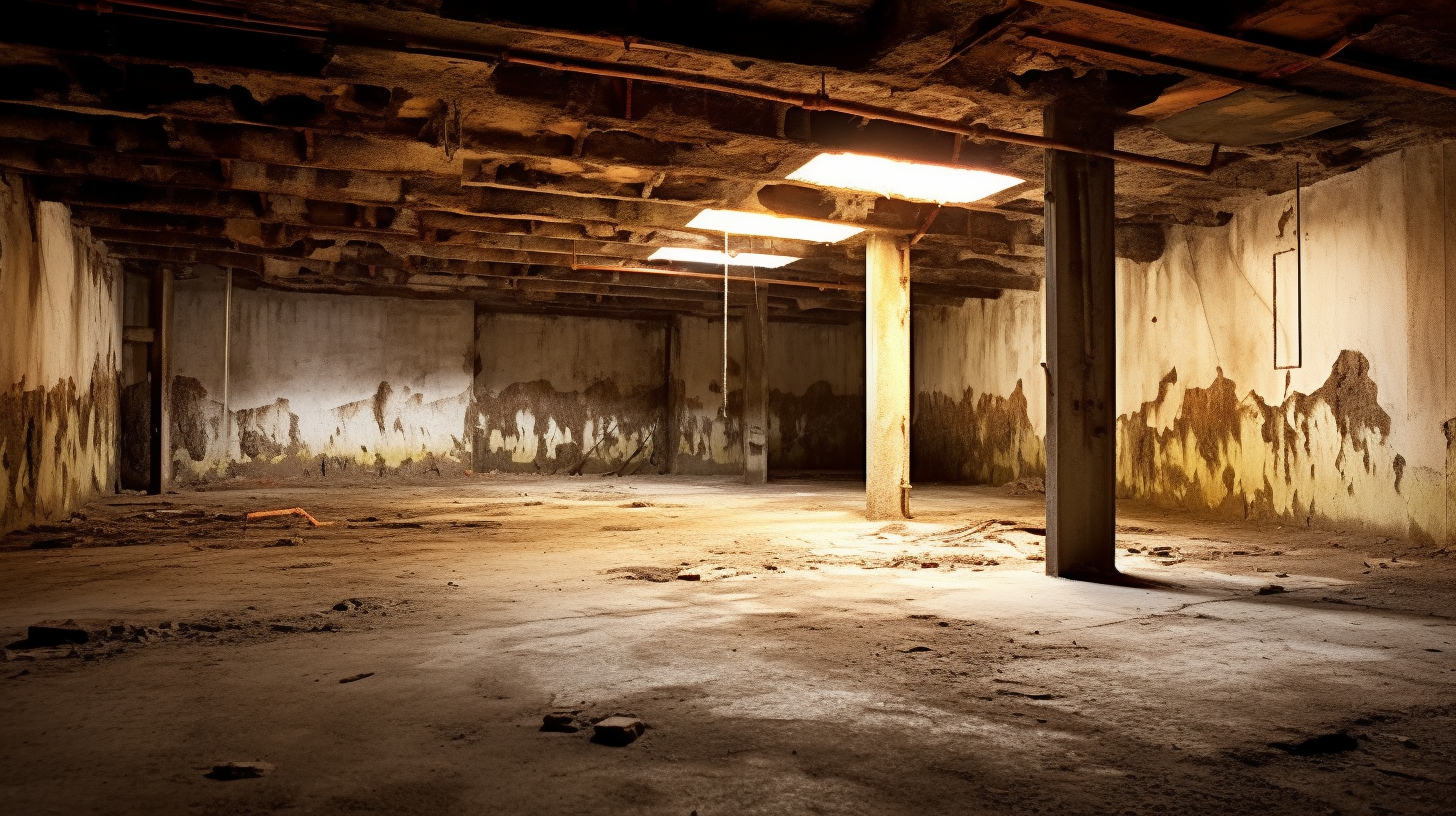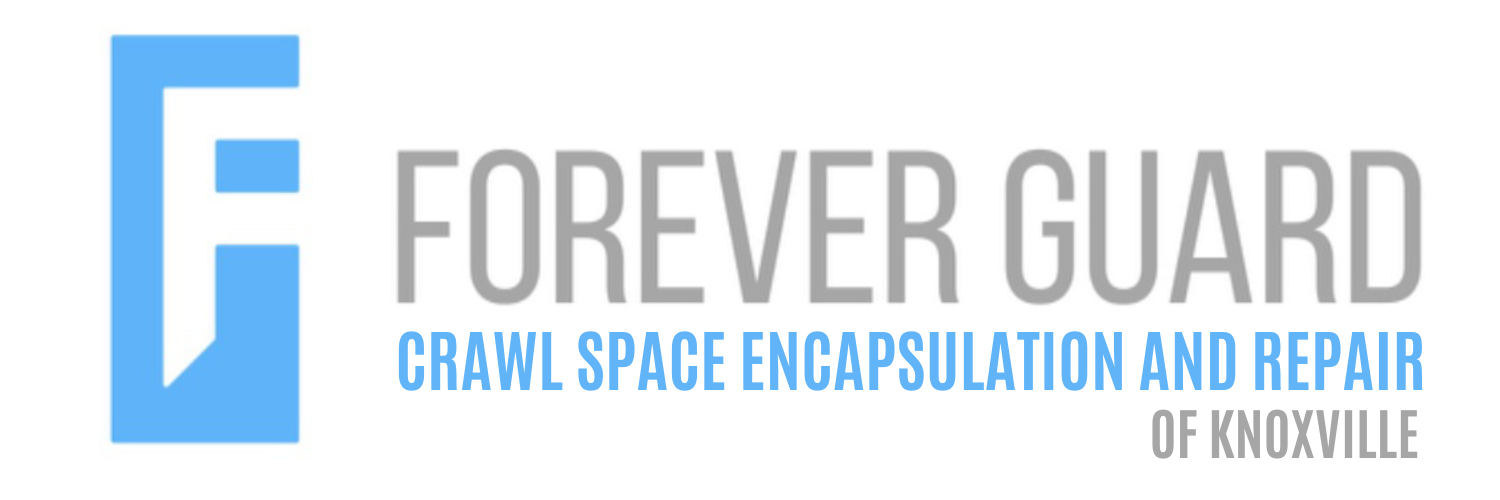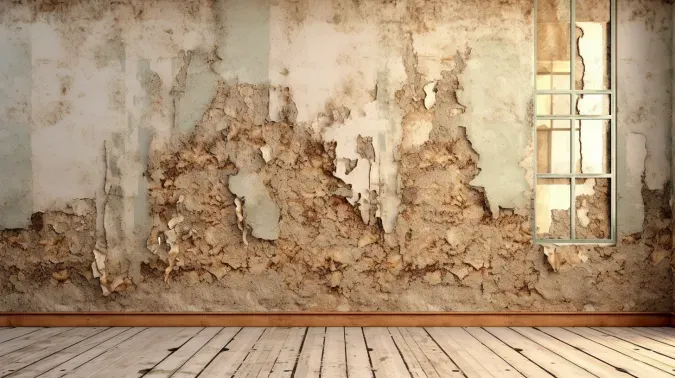Now IS THe Time To...

Crawl Space Services In Knoxville, TN
Stetson Howard: 865-432-6743
CRAWL SPACE ENCAPSULATION, REPAIR, WATERPROOFING & MOLD REMOVAL
No-Obligation, Free Inspections
No-Obligation Free Estimates
We Warranty All of Our Work
100% Satisfaction Guaranteed
The foundation of any building serves as its literal and metaphorical base, providing essential support and stability for the entire structure above. In this blog post, we'll delve into the critical importance of maintaining foundation integrity for the overall health and safety of a building.
A strong and stable foundation is not merely a structural necessity; it is the bedrock upon which the entire building rests. From ensuring structural stability to safeguarding against environmental factors, the foundation plays a pivotal role in maintaining the health and safety of the occupants within.
Join us as we explore the multifaceted significance of foundation integrity, from preventing structural failure to preserving property value and ensuring occupant well-being. By understanding the vital role that a solid foundation plays in the life of a building, you'll gain valuable insights into the importance of prioritizing foundation maintenance and addressing any issues promptly.
Understanding Foundation Damage
Foundation damage can have significant implications for the structural integrity of a building. This section provides insights into the types of foundation damage, initial signs and symptoms, and the importance of early detection.
Types of Foundation Damage
Understanding the various types of foundation damage is crucial for effective remediation:
- Settling Cracks: These cracks occur due to the natural settling of the foundation over time, leading to minor fissures in the concrete or masonry.
- Structural Cracks: Structural cracks are more severe and indicate underlying issues with the foundation's integrity, such as excessive pressure or inadequate support.
- Moisture-Related Damage: Moisture issues, such as water infiltration or drainage problems, can cause cracks and deterioration in the foundation materials, compromising its stability.
Insights into how these types of damage can evolve over time underscore the importance of addressing foundation issues promptly to prevent further deterioration and costly repairs.
Initial Signs and Symptoms
Early detection of foundation damage is key to preventing severe structural problems:
- Doors Sticking: Difficulty in opening or closing doors may indicate foundation movement, causing misalignment of door frames.
- Cracks in Walls and Floors: Cracks in interior walls, exterior brickwork, or concrete floors are common signs of foundation issues and should be evaluated by a professional.
Identifying these initial signs and symptoms allows homeowners to take proactive measures to address foundation issues before they escalate into more significant problems. Early detection can save time, money, and potentially prevent extensive damage to the building.
By understanding the types of foundation damage and recognizing the initial signs and symptoms, homeowners can prioritize early detection and intervention, preserving the structural integrity and value of their property.
Structural Integrity Risks
Neglecting foundation cracks can pose serious risks to the structural stability of a building. This section explores the potential consequences of untreated foundation damage, including risks to building stability and load-bearing capacity.
Risk to Building Stability
Ongoing neglect of foundation cracks can compromise the overall stability of a building:
- Serious Structural Instability: Foundation cracks left untreated can worsen over time, leading to significant structural instability. Without proper reinforcement, the building may be at risk of partial or total collapse.
- Illustrative Case Studies: Real-life case studies or anecdotal evidence can provide tangible examples of the severe outcomes of neglected foundation damage. These stories underscore the importance of addressing foundation issues promptly to prevent catastrophic consequences.
Impact on Load-Bearing Capacity
Untreated foundation cracks can undermine a building's ability to bear weight and maintain structural integrity:
- Weakened Load-Bearing Structures: Foundation cracks can weaken load-bearing walls, columns, and other structural elements, compromising their ability to support the weight of the building. This poses a significant danger to occupants and neighboring properties.
- Dangers of Weakened Structures: The dangers associated with weakened load-bearing structures include potential collapse, property damage, and injury or loss of life. It is essential to recognize the gravity of these risks and take proactive measures to address foundation issues before they escalate.
By understanding the risks to structural integrity posed by neglected foundation damage, homeowners can prioritize timely repairs and preventive measures. Investing in professional assessment and remediation can help mitigate these risks and safeguard the long-term stability and safety of the building.
Financial Implications
Foundation issues can have significant financial implications for homeowners. This section explores how neglected foundation problems can lead to increasing repair costs and a decline in property value.
Increasing Repair Costs
Delaying foundation repairs can result in minor issues escalating into major expenditures:
- Escalation of Repairs: Minor cracks or settlement issues, if left unattended, can worsen over time, leading to more extensive damage and costly repairs. What might have initially been a simple fix can escalate into a complex and expensive restoration project.
- Comparative Analysis: A comparative analysis of early repair costs versus major restoration costs highlights the importance of prompt action. While addressing foundation issues early may incur some upfront costs, the long-term savings compared to the expense of extensive restoration after prolonged neglect can be substantial.
Property Value Decline
Unresolved foundation issues can have a negative impact on the value of a property:
- Decrease in Property Value: Foundation problems detract from a property's overall appeal and desirability, resulting in a decrease in its market value. Prospective buyers may be deterred by the prospect of costly repairs or concerns about the structural integrity of the home.
- Impact on Resale Potential: Foundation issues can significantly reduce a property's resale potential, prolonging the time it takes to sell and potentially resulting in lower offers. In a competitive real estate market, homes with unresolved foundation issues may struggle to attract buyers.
By understanding the financial implications of foundation issues, homeowners can appreciate the importance of addressing these issues promptly. Investing in timely repairs not only helps mitigate escalating costs but also preserves the value and marketability of the property in the long run.
Environmental and Safety Hazards
Foundation issues can pose environmental and safety hazards for homeowners. This section explores the risks associated with water damage, mold growth, and pest infestations resulting from foundation cracks.
Water Damage and Mold Growth
Foundation cracks can create pathways for water intrusion into the home:
- Water Intrusion: Foundation cracks allow water to seep into the basement or crawl space, leading to moisture buildup and potential water damage to the interior of the home.
- Mold and Mildew: Moisture from water intrusion can create ideal conditions for mold and mildew growth. Mold poses significant health risks, including respiratory issues and allergic reactions, particularly for individuals with asthma or allergies.
Pest Infestations
Foundation cracks can also serve as entry points for pests:
- Entry Points for Pests: Gaps and cracks in the foundation provide entry points for pests such as rodents, insects, and termites. Once inside, pests can infest the home, causing damage to property and posing health risks to occupants.
- Structural Damage: Pests like termites can cause additional structural damage to the home, compromising its stability and integrity. Repairing this damage can be both challenging and costly.
By addressing foundation issues promptly, homeowners can mitigate the risk of water damage, mold growth, and pest infestations. Investing in professional assessment and repair helps safeguard the health and safety of occupants and protects the integrity of the home.
Legal and Insurance Challenges
Foundation issues can lead to legal and insurance complications for homeowners. This section explores the challenges associated with insurance coverage, building code violations, and potential legal risks resulting from neglected foundation problems.
Insurance Complications
Claiming insurance for damage related to ignored foundation problems can be challenging:
- Coverage Limitations: Home insurance policies may have limitations or exclusions for damage caused by neglect or lack of maintenance, including foundation issues. Insurers may deny claims if they deem the damage to be a result of long-term neglect.
- Typical Clauses: Typical clauses in home insurance policies address the homeowner's responsibility to maintain the property and address issues promptly to prevent further damage. Neglecting foundation maintenance may void coverage for related damage.
Building Code Violations and Legal Risks
Ignoring foundation damage can result in potential legal repercussions:
- Building Code Violations: Neglected foundation problems may lead to violations of local building codes and regulations. Failing to address structural issues in a timely manner can result in fines or penalties from local authorities.
- Liability Issues: Homeowners may be held liable for accidents or injuries resulting from neglected foundation maintenance. If foundation issues contribute to property damage or personal injury, homeowners could face legal action and liability claims.
By understanding the legal and insurance challenges associated with foundation issues, homeowners can take proactive steps to address these issues promptly. Seeking professional assessment and repair can help mitigate the risk of insurance complications, building code violations, and potential legal liabilities.
FAQs
Recent Blog Posts
Crawl Space News
